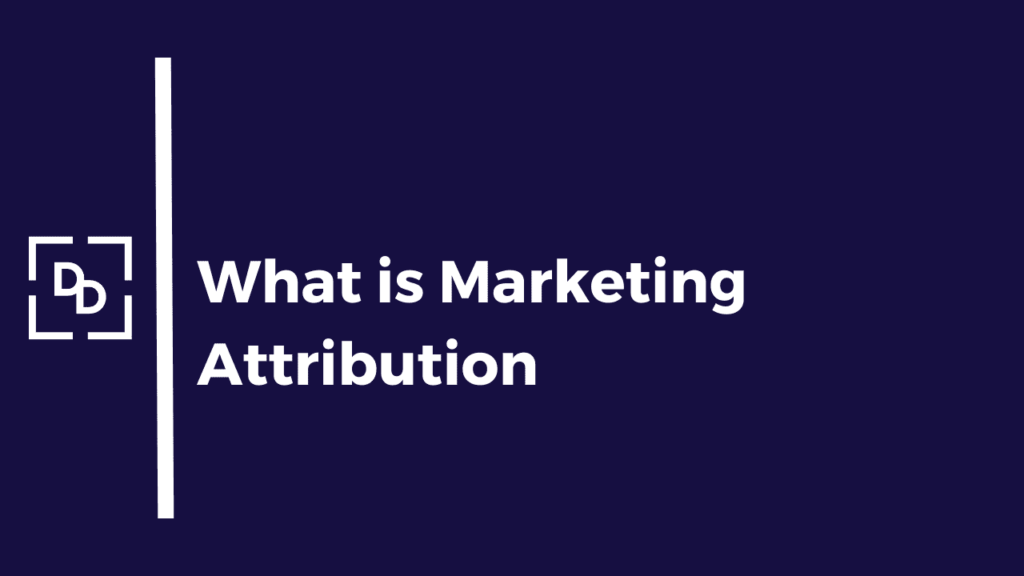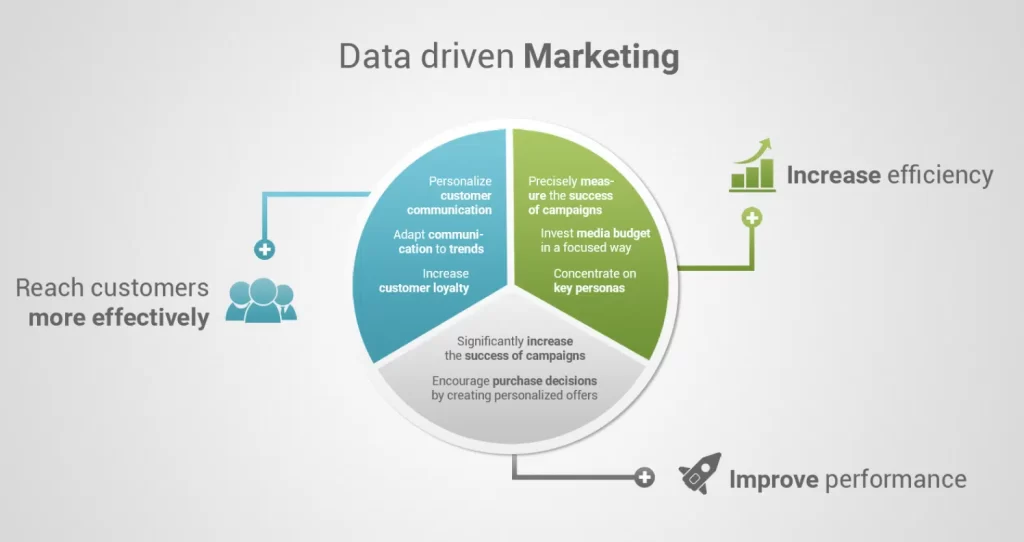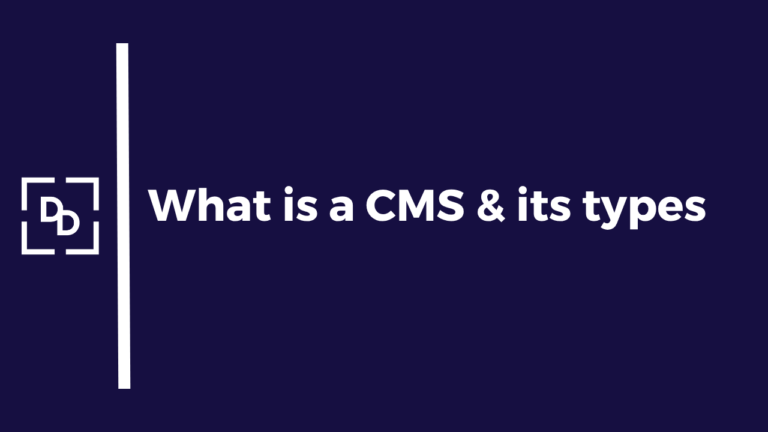Marketing Attribution
Marketing Attribution is crucial to Digital Marketing professionals because it helps them understand which marketing channels are driving the most conversions and revenue.
In this blog, we’ll find out what Marketing Attribution is & the different types of Attribution models.
Did You Know
Marketing Attribution was first developed by Direct Email campaigns way back in 1960’s. This was much before the advent of Digital Marketing
What is Marketing Attribution
Marketing Attribution refers to the process of measuring and analyzing the impact of marketing efforts on customer behavior and conversion.
It helps businesses understand which marketing channels and tactics are driving the most engagement and revenue, so they can optimize their marketing strategies and investments accordingly.
By tracking the customer journey from the first touch-point to the final conversion, marketing attribution enables businesses to gain valuable insights into their customers’ behavior and preferences, as well as the effectiveness of their marketing campaigns.
Types of Attribution Models
Marketing attribution models help solve this problem by providing a framework for assigning credit to each marketing touchpoint that contributes to a conversion. There are several different models to choose from, each with its own strengths and weaknesses.
Here are some of the most common marketing attribution models:
- First Touch Attribution: his model assigns 100% of the credit for a conversion to the first touchpoint the customer encountered. For example, if a customer clicked on a Facebook ad and then made a purchase, all the credit would go to Facebook
- Last-touch Attribution: This model assigns 100% of the credit for a conversion to the last touchpoint the customer encountered before making a purchase. For example, if a customer clicked on a Google search ad and then made a purchase, all the credit would go to Google
- Linear Attribution: This model assigns equal credit to each touchpoint that the customer encountered on the path to conversion. For example, if a customer clicked on a Facebook ad, then a Google search ad, and then made a purchase, each touchpoint would receive 33% of the credit
- Time decay Attribution: This model assigns more credit to touchpoints that are closer in time to the conversion. For example, if a customer clicked on a Facebook ad two weeks ago, then a Google search ad yesterday, and then made a purchase today, the Google search ad would receive more credit than the Facebook ad
Position-based Attribution: This model assigns more credit to touchpoints that occur at the beginning and end of the customer journey, with less credit assigned to touchpoints in the middle. For example, if a customer clicked on a Facebook ad, then visited the website three times, and then made a purchase after clicking on a Google search ad, the Facebook ad and Google search ad would receive more credit than the three website visits
Did You Know
Many companies still rely on last-click attribution models despite its limitations in providing a complete picture of the customer journey
Why is Marketing Attribution Important?
LinkedIn has also expanded its search functionality to enable deeper discovery of people, jobs, and companies on the platform.
- Marketing Attributions helps marketers understand the effectiveness of their Marketing campaigns
- With the rise of multi-channel advertising, attribution models are essential to measuring the impact of campaigns in 1 channel on the performance of other marketing channels
- Attributions allows for data-driven decisions to be taken enabling marketers to optimize their campaigns effectively and allocate budgets wisely
- With Attribution you can clearly identify the most effective channels in terms of ROAS & ROI
- Accurate Attribution can help marketers jusitfy their Marketing spend & plan for future budget allocations
Implementing Marketing Attribution
To implement marketing attribution for your business, you will need to take the following steps:
Define your goals: Before you can implement marketing attribution, you need to define your goals and objectives. What do you want to achieve with your marketing campaigns? Are you focused on increasing brand awareness or generating revenue?
Choose your attribution model: Once you have defined your goals, you need to choose the marketing attribution model that best aligns with those goals. As we discussed earlier, there are several different attribution models to choose from, so it’s important to choose the one that will provide you with the most relevant insights
Collect data: To implement marketing attribution, you will need to collect data on your marketing campaigns and customer behavior. This data can come from a variety of sources, including Google Analytics, CRM systems, and social media platforms
Analyze the data: Once you have collected the data, you need to analyze it to identify trends and insights. This will help you understand which marketing channels and tactics are driving the most revenue and which ones are not
Optimize your campaigns: Based on the insights you gain from your analysis, you can then optimize your marketing campaigns to improve ROI. For example, you may choose to allocate more budget to the marketing channels that are driving the most revenue or adjust your messaging to better resonate with your target audience
What is Data-Driven Attribution Model
In simple words, its an Attribution Model that uses statistical algorithms to distribute credit across all the major touch-points in the customers journey. This means that it considers all touch-points equally while determining the marketing channels contributing to conversions.
Data-Driven models use Machine Learning (ML) algorithms to determine & distribute credit to each touch-point based on its contribution to a conversion. The model uses historical data & then apply this to new data to make predictions about which channels are most likely to be most effective.
Some key advantages of Data-Driven Attribution model is:
- Identify which touch-points are most effective at each stage of the customer journey, thereby providing a comprehensive view
- Uses Machine Learning & Statistical algorithms to analyze data & assign credit to each touch-point
- Highly customizable allowing Marketers to adjust the model based on their specific needs & goals
- Can be tested & compared to other attribution models to determine which one is the most effective for a particular campaign
Data-driven attribution models are an effective way for marketers to gain a better understanding of which marketing channels are driving the most conversions. By analyzing data from all touchpoints in the customer journey, marketers can gain insights into which channels are working together to drive conversions. With the ability to customize the model based on specific business needs and goals, data-driven attribution models have become an essential tool for marketers looking to optimize their digital marketing campaigns.
Conclusion
Marketing attribution is a critical component of any digital marketing campaign. By determining which marketing channels and touchpoints are driving conversions, marketers can optimize their spending and increase their return on investment.
While there are several types of marketing attribution models, data-driven attribution has become increasingly popular due to its accuracy and comprehensiveness.
With the insights provided by data-driven attribution models, businesses can adjust their campaigns and optimize their marketing efforts for maximum effectiveness.
Subscribe to our Newsletter to stay updated on all news related to this topic. If you have any questions, email us on mail@digital-doorway.com
Frequently Asked Questions
Marketing attribution is the process of assigning credit to the various touchpoints in a customer's journey that led to a conversion or sale. It helps businesses understand which marketing channels and tactics are most effective in driving conversions
Marketing attribution allows businesses to understand which marketing channels and tactics are most effective in driving conversions, allowing them to optimize their campaigns for maximum ROI. It also provides insights into which touchpoints are most effective at each stage of the customer journey, allowing businesses to adjust their campaigns accordingly
Businesses can start by identifying their goals and choosing an attribution model that aligns with those goals. They should also ensure that they have the right tracking and analytics tools in place to collect and analyze data effectively
Businesses can measure the effectiveness of their marketing attribution by tracking key performance indicators (KPIs) such as conversion rates, customer acquisition costs, and customer lifetime value. They can also test different attribution models and compare their results to determine which one is most effective for their campaigns
Need Help?
Interested in scaling your business or get started in Digital Marketing?









